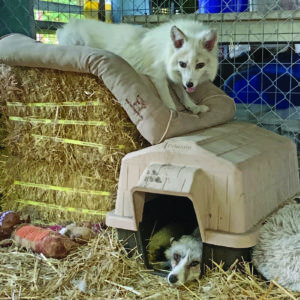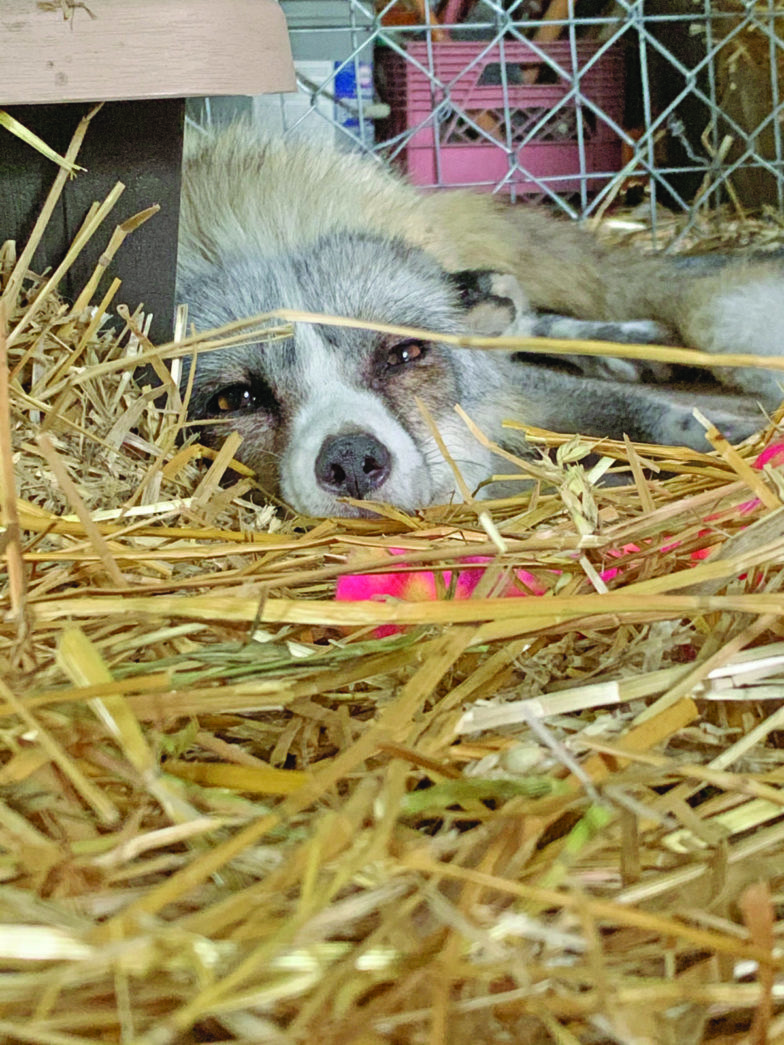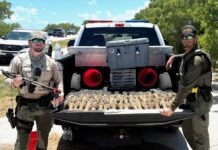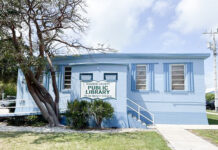
Two foxes left to die on a Midwest fur farm have found sanctuary in the Keys.
Louie’s fur wasn’t good enough for a coat, while Libby had a missing tail — a byproduct of breeding blemishes in an attempt to obtain top tier fur. The two foxes are safe and sound now thanks to the efforts of a Minnesota rescue that retrieved them and Key Largo resident Nicole Navarro, who’s giving them a new home and a brighter future.
An animal enthusiast, Navarro grew up on a 30-acre horse farm north of Pittsburgh. Her journey to the Keys began in 1993 when her mother moved to Key Largo to open a scuba shop. She bounced around different places for several years, until 2004 when she made the Keys her home.
“I worked at Dolphins Plus for a few years. … I just had the basic tourism-type jobs,” she said. “I lived in Key West for a little bit and worked in the Hemingway Home with the cats. I did Hurricane Irma with all the cats down there. That was a big production.”

After Irma, she started volunteering at the Monroe County Sheriff’s Animal Farm with Farmer Jeanne Selander. The animal farm acquired two foxes that were surrendered. Navarro had been around many animals in her life, but foxes were new to her.
“I became infatuated with them,” she said. “As I started learning more about where captive-bred foxes come from, aside from breeders, I really learned how horrible the fur farming industry is. A lot of people don’t know that it’s alive and well, and it is a gruesome industry in the U.S.”
Navarro was laid off from her job on March 21 as the coronavirus pandemic continued to unfold throughout Florida and the Keys. That night, however, she was contacted by a rescue and asked if she’d be willing to take on two farm foxes rescued from Minnesota.
“I couldn’t say ‘no.’” she said. “I am permitted as I have a license with Florida Fish & Wildlife Conservation. I had acquired my permit in the hopes one day I’d have my own foxes. Getting the two I have was definitely, extremely unexpected.”
Navarro said farm-bred foxes are pretty much “born to die.” Those deemed undesirable, meaning their fur is not worth much, are killed to make room for new fox pups being born. Navarro said a few rescues like Save a Fox Rescue in Minnesota have agreements with fur farmers to go in quickly and save those that otherwise would be destroyed.
“If the rescue has space, the fur farmer will let them go in and take them out quickly,” she said. “That’s why my two were able to make it out.”

While the foxes are traumatized from the care they received, Navarro said she’s able to go in with Louie and Libby to toss toys and play with them.
“They’re not aggressive. They’re more cautious,” she said. “There are days where I respect their boundaries. … That way they know I won’t hurt them. These two were severely abused on the fur farm just because of how jumpy they are.”
Next weekend, Navarro will be driving to north Florida to retrieve two more foxes from a rescue that saved them from a Midwest breeding farm. An enclosure has already been built for the two.
Navarro said the biggest thing people can do to help shut the industry down is to refrain from buying fur. According to Humane Society International, 100 million animals are bred and killed on farms to supply fur not just for coats, but also for jackets, pompoms, shoes, gloves and other accessories.
More information is at Pawsitive Beginnings Inc.’s Facebook page.






















